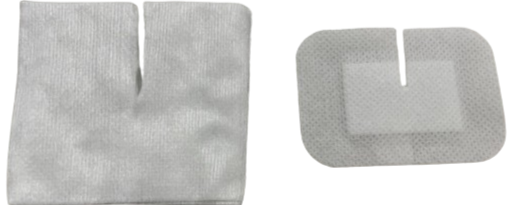Download and print as a PDF (319kB pdf)
On this page
- What is this information about?
- Why have I been given this information?
- What is a wound drain?
- How is the drain secured?
- How should I care for the drain?
- How should I replace the drain dressing?
- How should I measure my drain?
- How will the drain be removed?
- What should I do if I have any problems?
- Who can I contact for further information and advice?
What is this information about?
This information tells you what a wound drain is, and why it is needed; how to care for your wound drain when you get home; any problems you may have, and who to contact if you need help.
Why have I been given this information?
You have been given this information because you are leaving hospital with a wound drain. This information will help you to look after it once you get home.
What is a wound drain?
A drain is placed during your operation. A small plastic tube is left inside the wound created during an operation. A bottle is attached to the opposite end of the tube. It applies gentle suction to remove excess fluid that could collect at the operation site.
How is the drain secured?
The drain is held in place with a small stitch. A dressing is then placed over the top of the drain to reduce pulling on the stitch.
How should I care for the drain?
- The drain bottle is sealed and should not leak, but it should be kept upright so it does not lose the vacuum.
- Avoid positions that put pressure or pull on the drain.
- You will need to carry your drain when you are moving around.
How should I replace the drain dressing?
A dressing is placed at the site where the drain tube enters the skin. The dressing may need to be changed if it becomes wet or dirty.
- Gently remove the old dressing. Avoid pulling or moving the drain tube as this could cause discomfort or could dislodge the drain.
- Gauze and tape or a small adhesive dressing can be used to dress the drain site.
- Cut a slit into the new dressing as shown in the images to allow the drain to sit in the centre.
- Wrap the dressing around the drain site.
- Secure the dressing to the skin using the adhesive.

How should I measure my drain?
The drain has measurements printed on the side.
The plastic surgery team may ask you to monitor how much fluid is collected in the drain. The drain output should be measured around the same time each day.
The amount of fluid the drain is collecting helps to determine when it can be removed.
Please use the chart at the end of this leaflet to track how much fluid is collected (the drain output).
How will the drain be removed?
The Plastic surgery team will review the drain output and decide if it is ready to be removed. This is carried out in the clinic or on the ward and is a simple, quick process.
- First suction on the drain bottle is released.
- The suture which holds the drain in place is then cut and gently removed.
- The drain tube is then pulled with light pressure and slides out.
Some patients experience some mild discomfort which usually goes after a few seconds.
What should I do if I have any problems?
Occasionally problems may occur with the drain. These are usually very easy to solve but if you are worried, please contact the plastic surgery team.
Possible problems could be:
The drain bottle becomes too full or heavy
Please change the bottle as directed by the plastic team. Only do this if you have been given a spare bottle and feel comfortable doing this. If you do not have a spare bottle, please contact the plastics team.
The bottle loses suction
There is a green cylinder on top of the drain bottle. When this is held in the compressed position, the bottle is holding suction. If it is no longer compressed, then the suction has been lost and you may need a new bottle. Please leave the drain in place and tell the plastics team.

Leaking from where the drain enters the skin
Place an absorbent pad or adhesive dressing over the leaking site and contact the plastics team for advice.
The drain falls out
Place an absorbent pad or adhesive dressing over the area and contact the plastics team for advice. Do not throw away the drain bottle until it has been seen by the plastics team.
New swelling or redness around where the drain enters the skin
Some mild swelling and redness are normal around a drain site. If the symptoms worsen or you have concerns, please contact the plastics team for advice.
If symptoms worsen, or if out of hours, contact 111. If you develop severe symptoms of infection, call 999 or go to A&E.
Who can I contact for further information and advice?
In an emergency call 999.
Email the Plastic Surgery Department: uhsussex.plasticsteam@nhs.net
Call the Plastic Surgery Department on 07771 984525.
The department is open between these times: Monday to Thursday 8.00am to 4.30pm, and Friday 8.00am to 1.00pm.
If out of hours call 111, or contact your GP for advice.
To view the drain monitoring chart, please see the PDF version of this leaflet at the top of the page.
This information is intended for patients receiving care in Brighton & Hove or Haywards Heath.
The information here is for guidance purposes only and is in no way intended to replace professional clinical advice by a qualified practitioner.